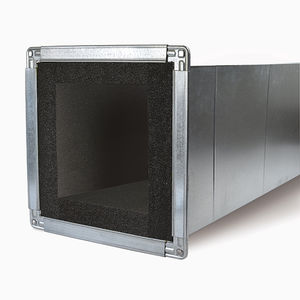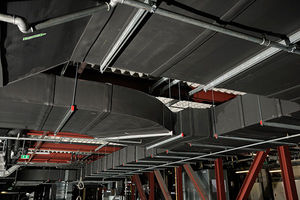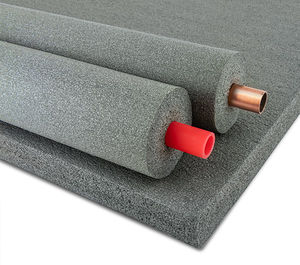 In a typical school building, heating, cooling, and lighting account for nearly 70% of energy use. Although this energy use costs only about 4% of a school district expenditure, it’s an area where schools can easily make improvements. By being more energy efficient by insulating or upgrading mechanical systems, school districts can reduce greenhouse gasses while saving money, plus help protect indoor air quality (IAQ) while enhancing the learning environment.
In a typical school building, heating, cooling, and lighting account for nearly 70% of energy use. Although this energy use costs only about 4% of a school district expenditure, it’s an area where schools can easily make improvements. By being more energy efficient by insulating or upgrading mechanical systems, school districts can reduce greenhouse gasses while saving money, plus help protect indoor air quality (IAQ) while enhancing the learning environment.
Funding is Fundamental
Adoption of newer HVAC and plumbing technologies in the education facility construction environment can be slow due to confidence in reliability and budget constraints. However, upgrades to systems can help remedy air quality issues, improve comfort, support better student learning, and provide significant reductions in school energy bills. The Infrastructure Investment and Jobs Act (IIJA), American Rescue Plan Act (ARP), and 2021 Coronavirus Response and Relief Supplemental Appropriations Act (CRRSAA) provide tens of billions of dollars in new funding to U.S. K-12 public schools for facility and transportation improvements. Strategic use of this funding can help remedy historic school facilities investments, reduce school energy expenditures, help schools lead the nation in solving the climate crisis, and create jobs. . Installing insulation on chilled systems, HVAC ducts, pipes, boilers, and chilled piping is a simple facility improvement that can improve energy performance, control condensation, protect indoor air quality, and provide acoustic control.
 ArmaFlex® Passes the IAQ Test
ArmaFlex® Passes the IAQ Test
Educational facilities cannot afford energy inefficiency, questionable IAQ, or system maintenance issues. That’s why the best insulation choice for these facilities is the one that provides long-lasting thermal performance without posing any threat to the indoor air environment. IAQ is especially important in ductwork, where fibrous material can get caught up in the air stream exposing building occupants to airborne particulates. Not only is ArmaFlex non-particulating – meaning its structure will not break apart and become airborne – it is completely fiber-free and made with exclusive Microban® antimicrobial protection to resist the growth of mold and mildew on the insulation. It is also GREENGUARD® Gold Certified to low emission standards with low VOCs and no off-gassing.

Class Act in Condensation Protection
Cold-water and chilled air-handling systems are prone to condensation and water vapor issues. Both systems are likely to develop moisture problems if not properly insulated. Moisture intrusion can result in corrosion under insulation (CUI), structural degradation, and poor indoor air quality due to potential mold and mildew. Additionally, insulation will lose thermal performance over time meaning more energy will be required to maintain the same system operation.
Extra Credit in Acoustics

Elastomeric foam earns extra points for its excellent acoustic properties when used as a duct liner or wrap in HVAC systems. The foam absorbs noise from the system and dampens structure-borne vibrations from the ductwork, fans, or motors. It is also dense enough to provide excellent sound deadening (vibration damping) of HVAC sounds. Armacell insulation products have good NRC values (up to 0.6) and STC values of 25. The end result is a quieter learning environment that is free from low-frequency mechanical disturbances.

Advanced Fire and Smoke Protection
For applications requiring flame and smoke ratings, many of our solutions meet ASTM E 84 at 25/50 for 1-1/2” and 2” thicknesses. ArmaFlex Ultra® is also an innovative product that is the first elastomeric insulation Classified by UL to UL 723 at flame/smoke rating of less than 25/50. For more information on flame and smoke requirements and our applicable products, click here.
Installers take note — Specifying Armacell’s innovative insulation solutions for schools and universities is the smart choice for supporting our future generations.
